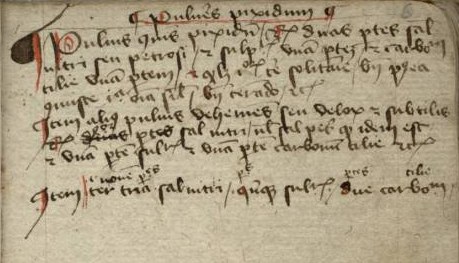|
Rubrication
Rubrication is the addition of text in red ink to a manuscript for emphasis. Practitioners of rubrication, so-called ''rubricators'' or ''rubrishers'', were specialized scribes who received text from the original scribe. Rubrication was one of several steps in the medieval process of manuscript making. The term comes from the Latin , "to color red", the base word being , "red". The practice began in pharaonic Egypt with scribes emphasizing important text, such as headings, new parts of a narrative, etc., on papyri with red ink. History The practice of rubrication usually entailed the addition of red headings to mark the end of one section of text and the beginning of another. Such headings were sometimes used to introduce the subject of the following section or to declare its purpose and function. Rubrication was used so often in this regard that the term ''rubric'' was commonly used as a generic term for headers of any type or color, though it technically referred only to he ... [...More Info...] [...Related Items...] OR: [Wikipedia] [Google] [Baidu] [Amazon] |
Rubric
A rubric is a word or section of text that is traditionally written or printed in red ink for emphasis. The word derives from the Latin , meaning red ochre or red chalk, and originates in medieval illuminated manuscripts from the 13th century or earlier. In these, red letters were used to highlight initial capitals (particularly of psalms), section headings and names of religious significance, a practice known as rubrication, which was a separate stage in the production of a manuscript. Rubric can also mean the red ink or paint used to make rubrics, or the pigment used to make it. Although red was most often used, other colours came into use from the late Middle Ages onwards, and the word rubric was used for these also. Medievalists can use patterns of rubrication to help identify textual traditions. Various figurative senses of the word have been extended from its original meaning. Usually these senses are used within the set phrase "under [whatever] rubric", for example, "unde ... [...More Info...] [...Related Items...] OR: [Wikipedia] [Google] [Baidu] [Amazon] |
Pilcrow
In typography, the pilcrow (¶) is a glyph used to identify a paragraph. In editorial production the ''pilcrow'' typographic character is also known as the paragraph mark, the paragraph sign, the paragraph symbol, the paraph, and the blind P. In writing and editorial practice, authors and editors use the pilcrow glyph to indicate the start of separate paragraphs, and to identify a new paragraph within a long block of text without paragraph indentions, as in the book ''An Essay on Typography'' (1931), by Eric Gill. In the Middle Ages, the practice of rubrication (type in red-ink) used a red pilcrow to indicate the beginning of a different train of thought within the author's narrative without paragraphs. The letterform of the pilcrow resembles a minuscule or a mirrored majuscule , with a usually-doubled backbone reaching from the descender to the ascender height. The bowl on the left side can be filled or empty, and occasionally extends far enough downward that the c ... [...More Info...] [...Related Items...] OR: [Wikipedia] [Google] [Baidu] [Amazon] |
Manuscript
A manuscript (abbreviated MS for singular and MSS for plural) was, traditionally, any document written by hand or typewritten, as opposed to mechanically printed or reproduced in some indirect or automated way. More recently, the term has come to be understood to further include ''any'' written, typed, or word-processed copy of an author's work, as distinguished from the rendition as a printed version of the same. Before the arrival of prints, all documents and books were manuscripts. Manuscripts are not defined by their contents, which may combine writing with mathematical calculations, maps, music notation, explanatory figures, or illustrations. Terminology The word "manuscript" derives from the (from , hand and from , to write), and is first recorded in English in 1597. An earlier term in English that shares the meaning of a handwritten document is "hand-writ" (or "handwrit"), which is first attested around 1175 and is now rarely used. The study of the writing ( ... [...More Info...] [...Related Items...] OR: [Wikipedia] [Google] [Baidu] [Amazon] |


